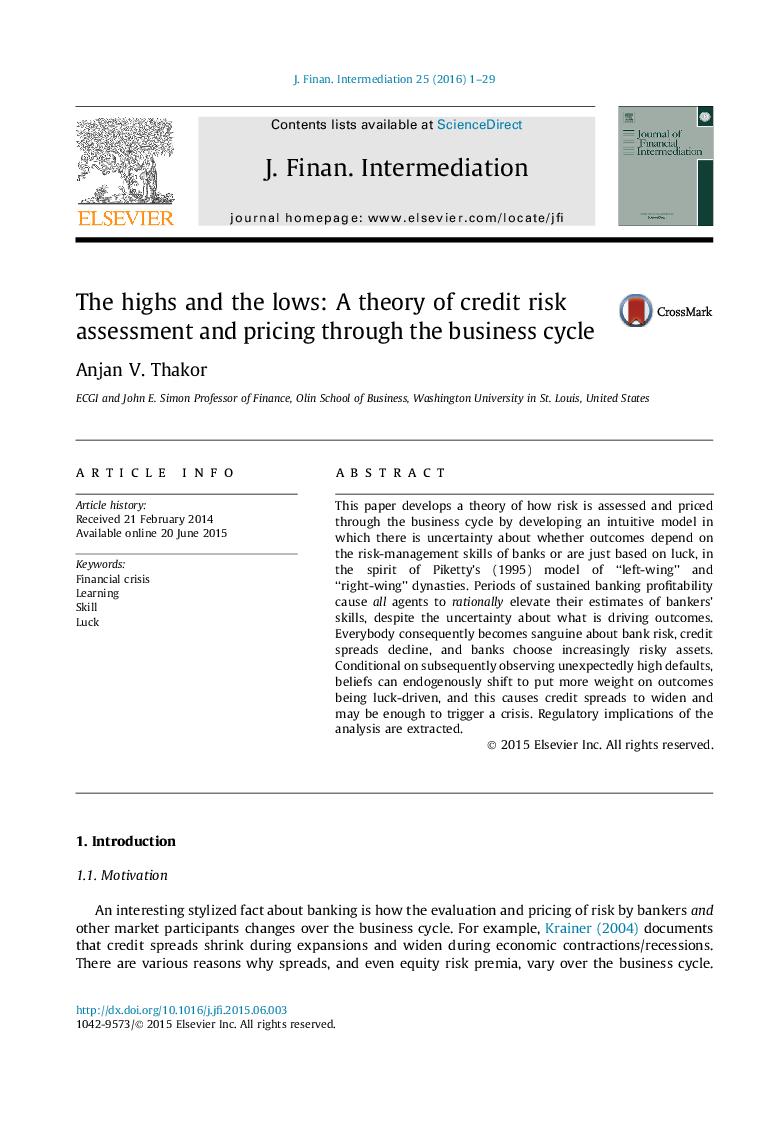| Article ID | Journal | Published Year | Pages | File Type |
|---|---|---|---|---|
| 960650 | Journal of Financial Intermediation | 2016 | 29 Pages |
This paper develops a theory of how risk is assessed and priced through the business cycle by developing an intuitive model in which there is uncertainty about whether outcomes depend on the risk-management skills of banks or are just based on luck, in the spirit of Piketty’s (1995) model of “left-wing” and “right-wing” dynasties. Periods of sustained banking profitability cause all agents to rationally elevate their estimates of bankers’ skills, despite the uncertainty about what is driving outcomes. Everybody consequently becomes sanguine about bank risk, credit spreads decline, and banks choose increasingly risky assets. Conditional on subsequently observing unexpectedly high defaults, beliefs can endogenously shift to put more weight on outcomes being luck-driven, and this causes credit spreads to widen and may be enough to trigger a crisis. Regulatory implications of the analysis are extracted.
